Ancient Chinese Architecture
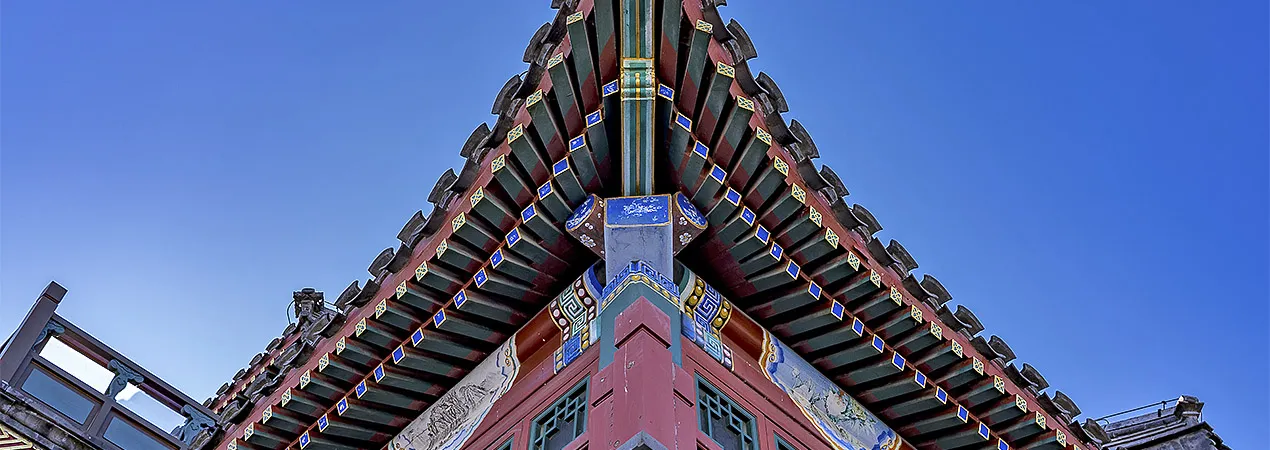
Most Ancient Chinese architecture consists of a timber framework that is mainly made up of wooden vertical pillars and crossbeams in addition to bricks and tiles. Visitors who come to China may marvel at the ancient Chinese architecture with its varied roof patterns, different types of buildings, intricate structures, vivid colors, painting, and calligraphy ornaments. Are you curious about what is categorized as ancient Chinese architecture? Do you know what the color features of ancient Chinese architecture are?
Chinese ancient architecture follows the style of the mainstream Han ethnic group, and falls into about 8 categories.
The Classification for Chinese Ancient Architecture Includes:
1. Imperial and Administrative Buildings
The category of imperial and administrative architecture includes palaces, royal gardens, Yashu buildings (administrative buildings), and mansions.
Palaces: a palace is a grand residence, particularly a residence or the home of the emperor in feudal China. It stands for the regime and the style of imperial rule over all the land. Although the palaces varied through each historical period, the common features are splendor and majesty.
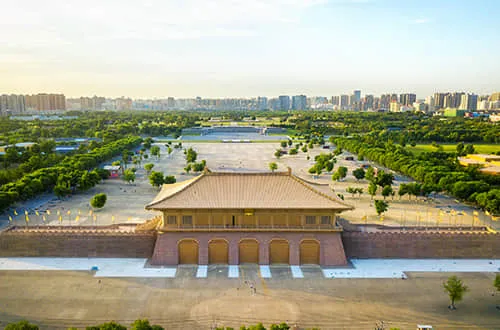
The Daming Palace in Xi’an, built in 634 CE, the Tang Dynasty
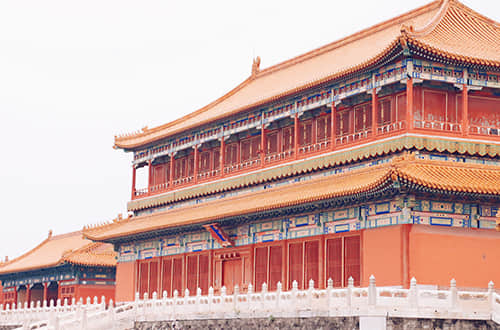
Forbidden City in Beijing, built in 1420 CE, the Ming Dynasty
Yashu: Chinese ancient administration buildings are an important component of Chinese ancient cities. During the Ming and the Qing Dynasties, the heyday of ancient architecture gave full play to its local characteristics.
Mansions: Aristocracy or official’s mansions, such as the General office and Palace of the Prince.
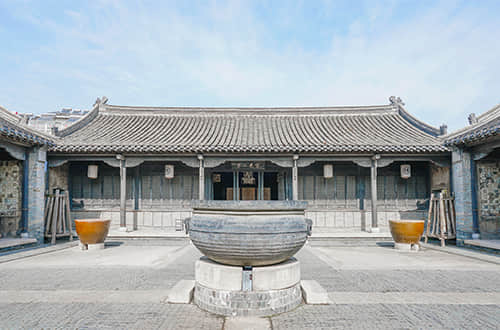
Huai’an Ching Governor, built in 1370 CE, the Ming Dynasty, Huai’an
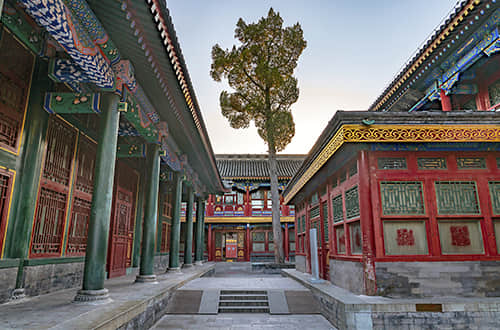
Gong’s Mansion, built in 1776 CE, in the Qing Dynasty
2. Folk Houses
China has a vast territory and a large number of ethnic groups. Following the basic rules of ancient Chinese architecture, the folk house stands out for its regional characteristics and ethnic customs.
Yurt in Mongolia: The traditional yurt is a portable, round tent covered with woolen blankets, and the structure comprises of wooden net-shaped parallel supports.
Siheyuan in Beijing: Siheyuan is a residential courtyard; most of the courtyards were built in the Ming and the Qing Dynasty.
Cave-houses in northwestern China: To take advantage of the local hard, solid loess, cave houses were built, which divide into three types: cliff-side cave, detached caves, and sunken caves.
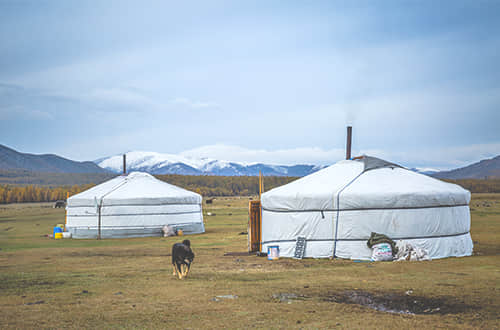
Yurt in Mongolia
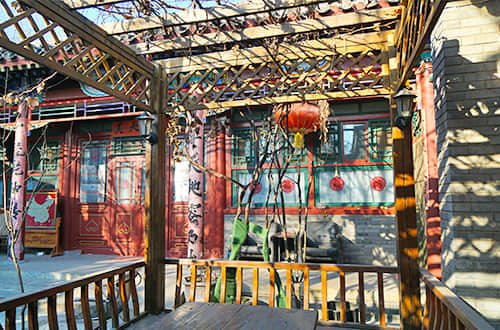
Siheyuan in Beijing
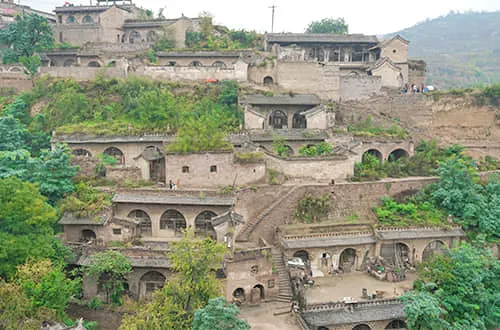
Cave-houses in northwestern China
Hui-style architecture in Anhui: characterized by white walls with dark tiles, horse-head walls, decorative windows and doors.
Blockhouses in Tibet: Blockhouses are built of stone and wood, generally of three floors, the first serves as a shelter for livestock and as a warehouse, the second is used as living room, sitting room, kitchen room, and a storehouse, and the third floor is a family sutra hall and a balcony.
Stilt houses in southwestern China: These houses are raised above the ground or water for protection from flooding and vermin. Stilt houses are usually constructed with wooden beams and pillars tied with bamboo and rattan strips. There are spaces that can be used as storage.
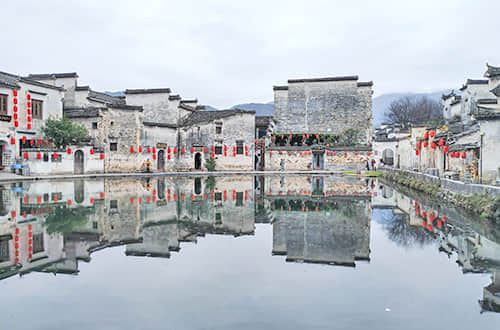
Hui-style architecture
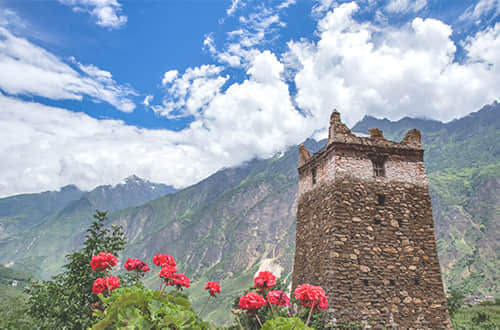
Blockhouses in Tibet
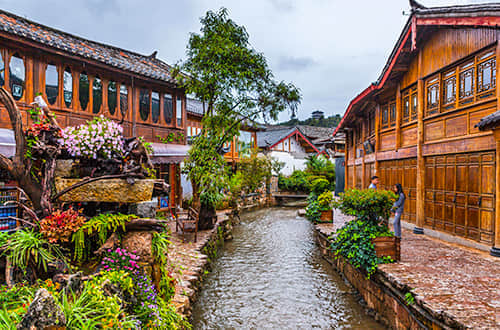
Stilt Houses in Yunnan
3. Chinese Gardens
Garden architecture falls into two main types: the northern imperial gardens and the private gardens. These are places for retreat and leisure, banquets, and Chinese Opera; their decoration combines the elite of buildings, paintings, calligraphy, and gardening.
Imperial gardens look exquisite and grandiose. The most famous ones include the Yuanmingyuan Summer Palace and the Summer Palace.
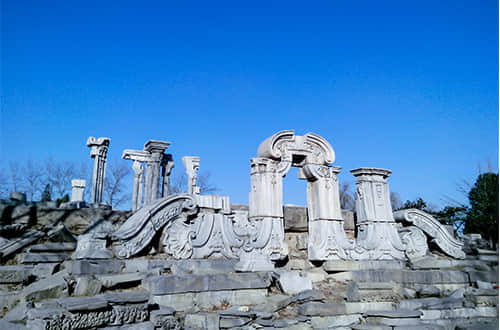
Yuanmingyuan Summer Palace
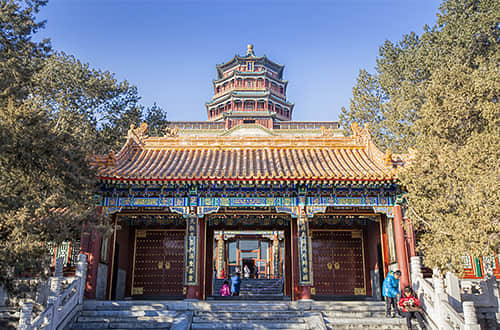
Summer Palace
Private Gardens are usually built in harmony with their natural surroundings. The classical Chinese garden combines nature with artificial landscapes such as rocks, water, and plants. Many of the most famous private gardens are located in Suzhou.
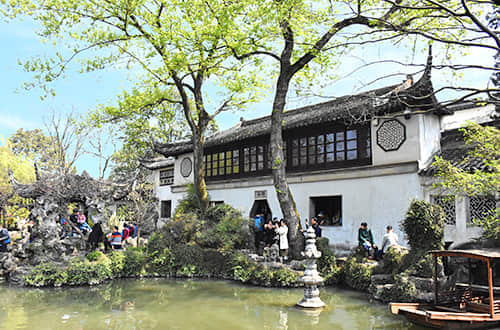
Lingering Garden in Suzhou
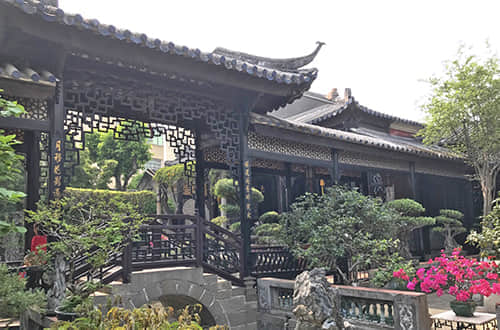
Yuyin Hill House built in 1871, the Qing Dynasty, a best one of Lingnan Style
4. Religious Architecture
Buddhist architecture became part of the traditional Chinese architecture after Buddhism had entered China after about the 6th or 7th century. Chinese Buddhist architecture consists of Buddhist temples, pagodas, grottos, and towers.
Daoism was born during the Eastern Han Dynasty (25-220 CE), and its main architecture is temples.
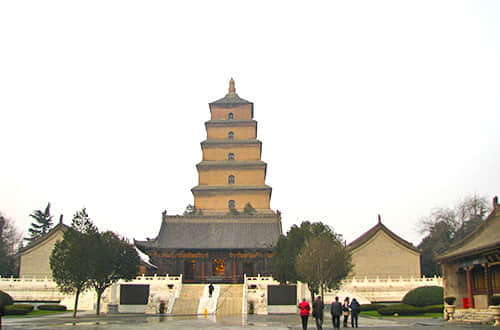
Wild Goose Pagoda in Xi’an, built in 652 CE, in the Tang Dynasty
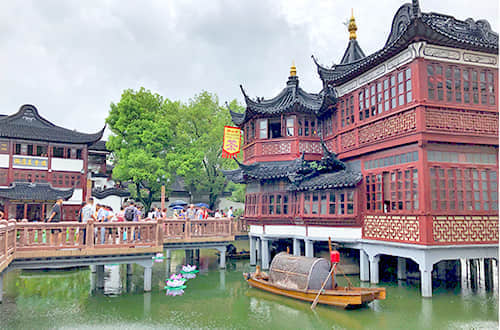
City God Temple of Shanghai, built in the Ming Dynasty (1403-1420 CE)
5. Military Architecture
Military buildings in ancient times were important in a city as part of the defense system, such as a defensive wall, a watchtower, a beacon Tower, or a moat with a suspension bridge.
The earliest city wall was made of wood or stone with clay, but since the Song Dynasty (960-1279 CE), bricks were usually used in building the city wall because the invention of gunpowder had begun to be widely used in sieges.
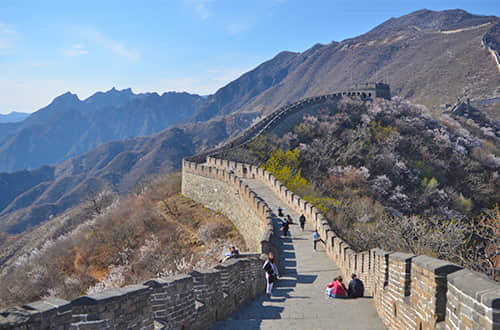
A section of Great Wall
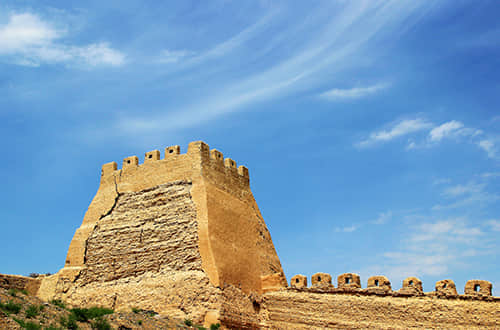
A watchtower of Jiayu Pass
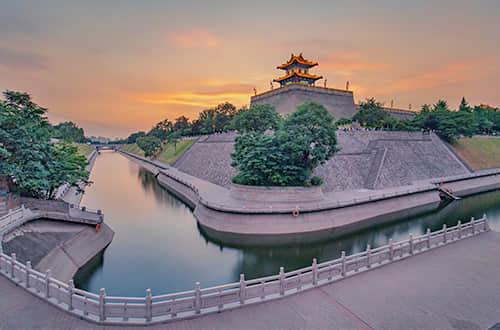
A moat in Xi'an
6. Mausoleum
The mausoleum was one part of most of the majesty complexes, and used the local terrain, or were built against mountains, with a few of them built on the plain. In the feudal period, the rulers devoted many years, even a whole lifetime after ascending the throne, to building these magnificent tombs for themselves. Chinese mausoleum construction in the Ming Dynasty reached a climax in history. Most of the Chinese tombs against the mountains and its layout are surrounded by walls and turrets distributed in the four corners. A wide passage is in front of the mausoleum. A few stone beasts stand on each side, along with lush trees providing a feeling of solemnity and tranquility.
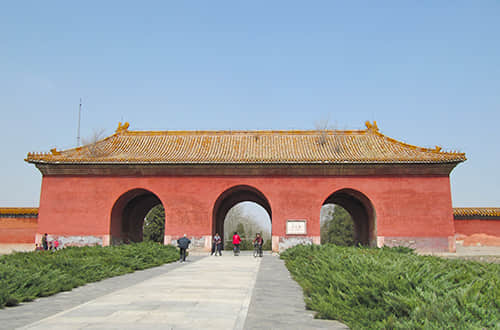
13 emperors of the Ming Dynasty (1368-1644 CE) were buried
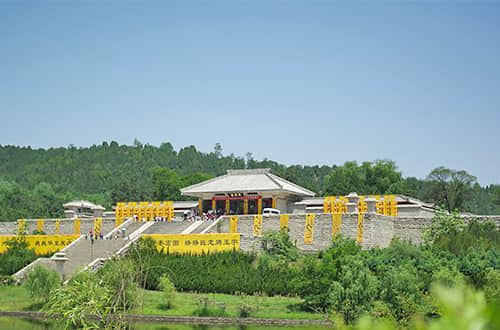
Huangdi Mausoleum:the mausoleum had become the site for national sacrifices since 770 CE (Tang Dynasty)
7. Civil Public Buildings
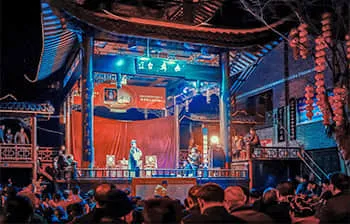 A traditional theatrical stage
A traditional theatrical stage
The layout of ancient Chinese urban architecture has progressed from simple to complex, the structure from loose to regular. The city of Chang’an, a typical city in the Tang Dynasty, had an uncluttered layout and straight streets. In the Song Dynasty, it had formed streets according to types of industries, especially entertainment architecture along the side of a street, such as dance floors, and a traditional theatrical stage.
8. Monumental Architecture
Monumental architecture can be divided into three types: memorial architecture such as the inscriptions on stone, historic buildings, including famous people’s former homes, sites of important conferences in history, and monumental buildings. Monumental buildings are large-scale, for instance, a memorial archway, a memorial hall, or an historical pavilion.
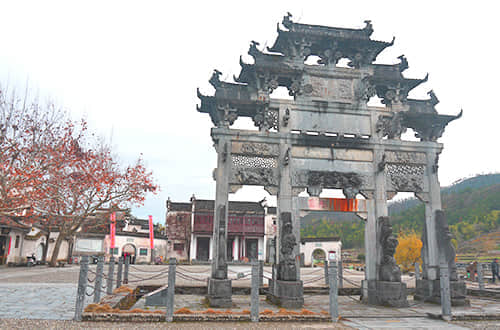
An archway in Xidi Village
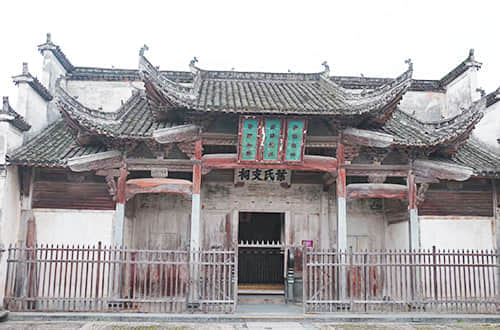
An ancestral shring
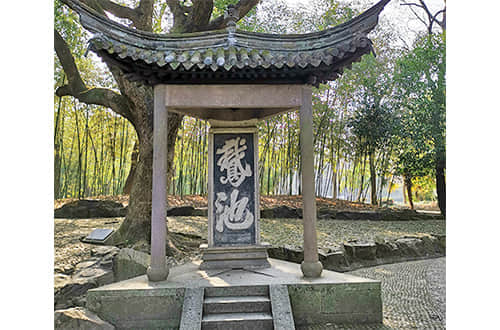
A historical pavillion
What are the decoration features of ancient Chinese architecture?
1. Bold, colorful painting, such as yellow, red, and green, was only used on imperial architecture and religious architecture, because the brilliant colors made buildings look majestic and grand. However, plain colors such as black, white, and gray were applied to garden-like buildings or commonplace houses.
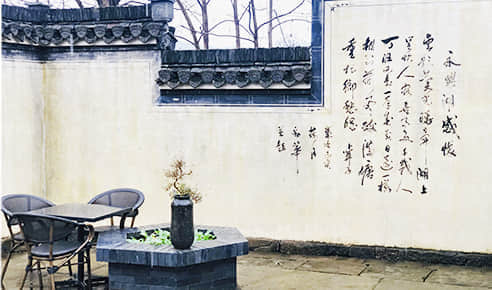
2. Calligraphy works were widely used on decorations in ancient Chinese architecture, for instance, an inscribed board on the lintel, and a couplet was written on pillars. China is the only country which characteristically shows decorations on the buildings.

OR
Are you eager to begin your Chinese cultural journey?
Drop us a line and we will promptly connect you with our leading China expert!
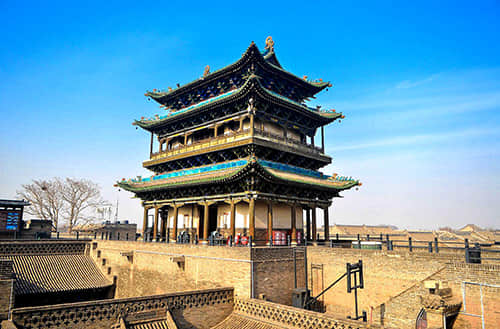 Art and Architecture Tour
Art and Architecture Tour 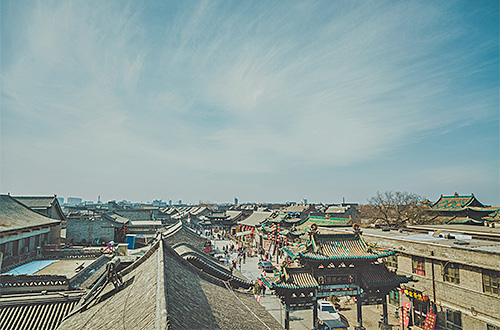 Pingyao Ancient Architecture Tour from Xi'an
Pingyao Ancient Architecture Tour from Xi'an 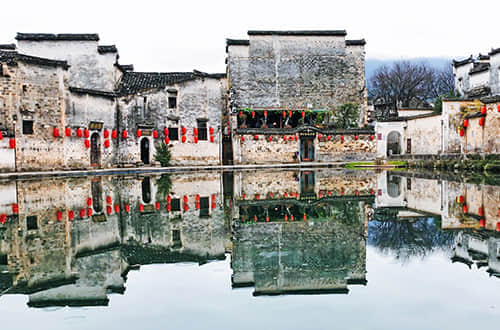 Hui-Style Architecture
Hui-Style Architecture 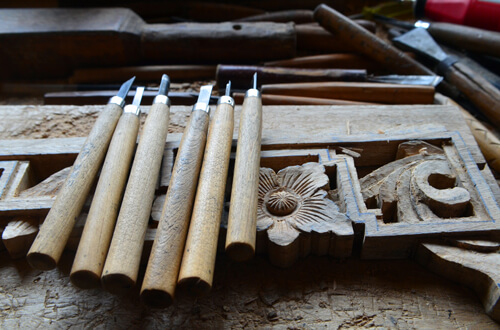 Chinese Woodcarving Art
Chinese Woodcarving Art